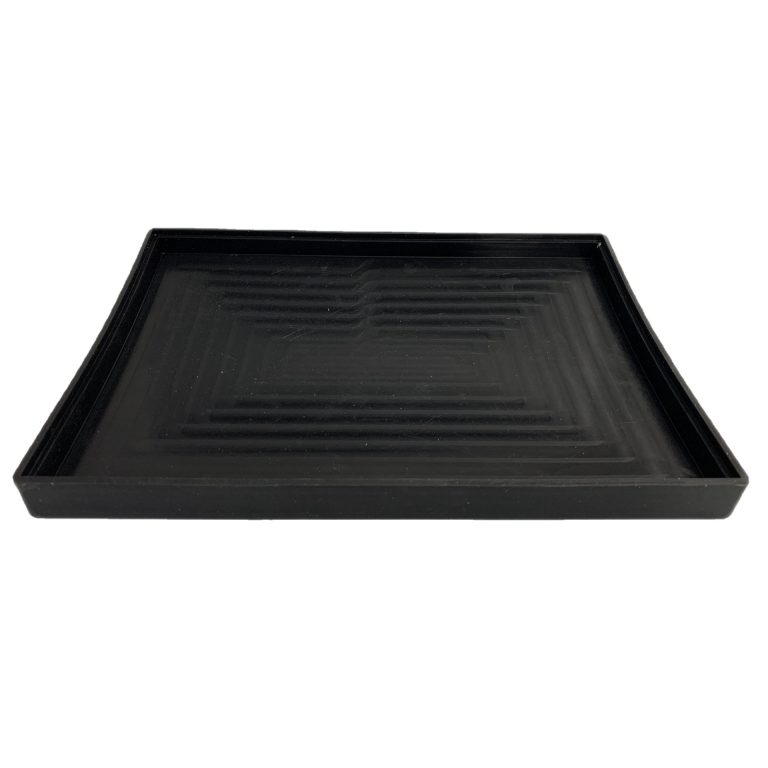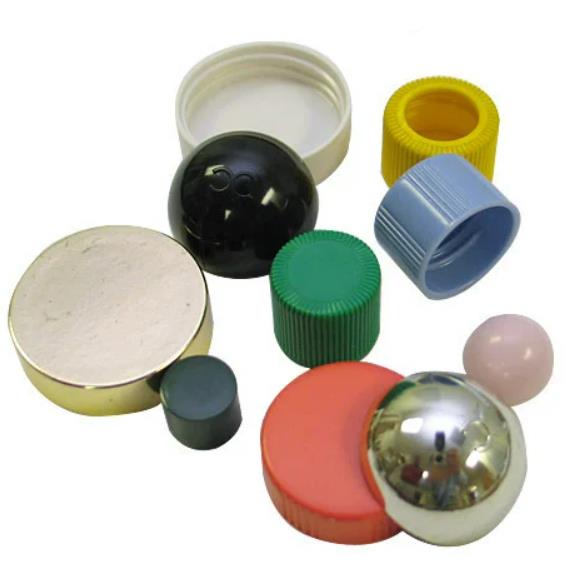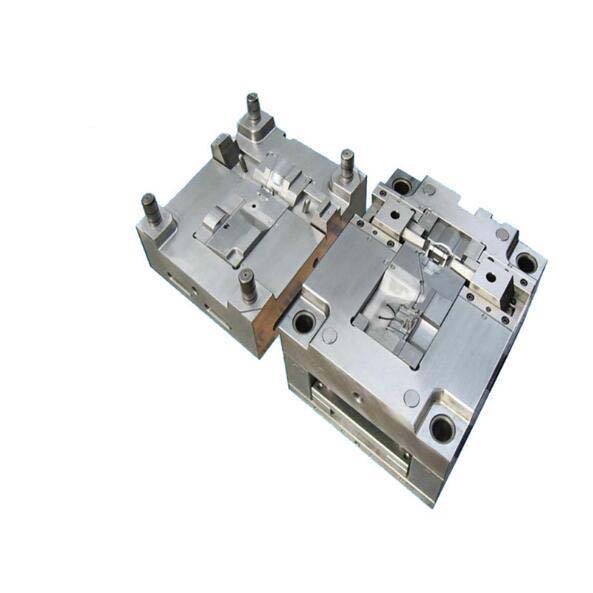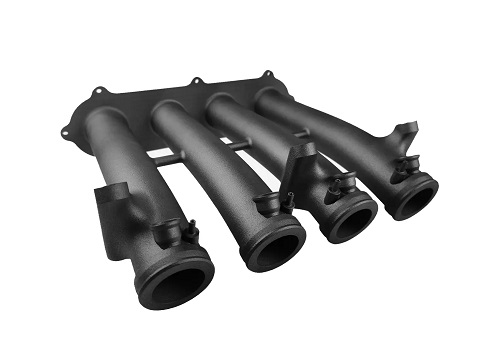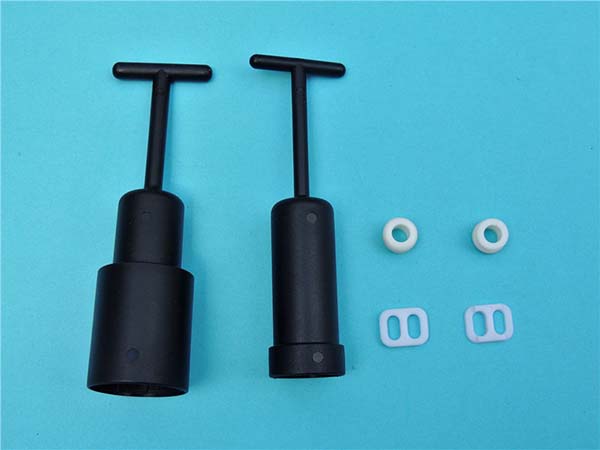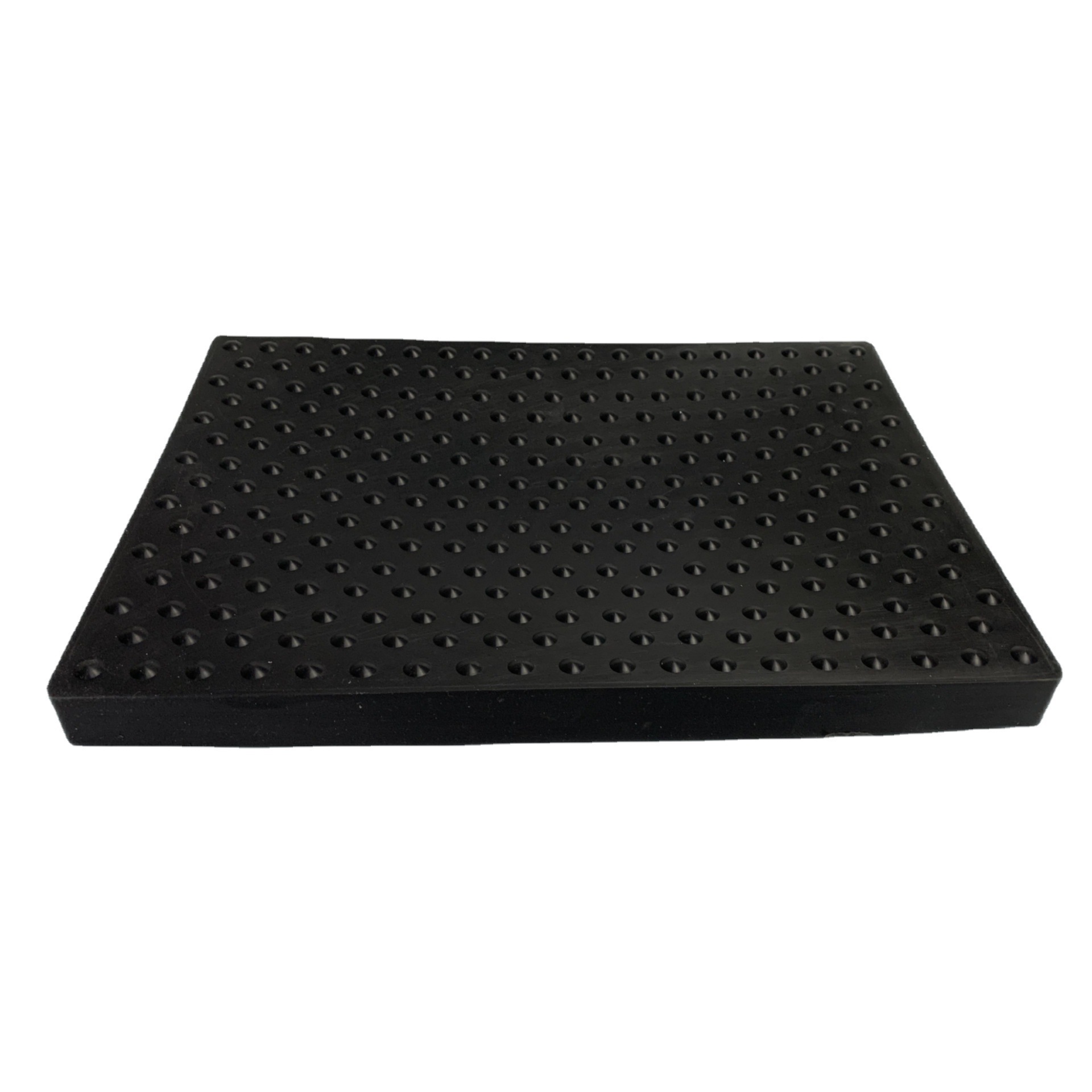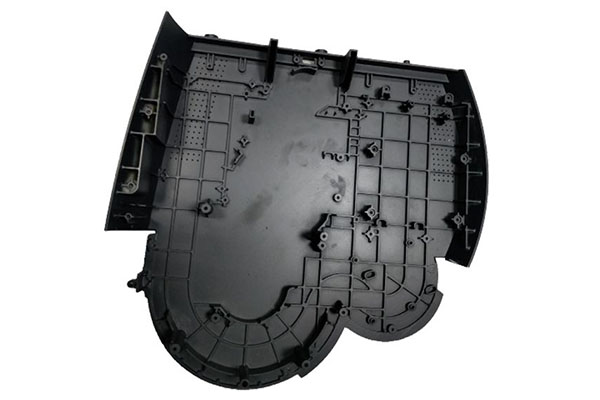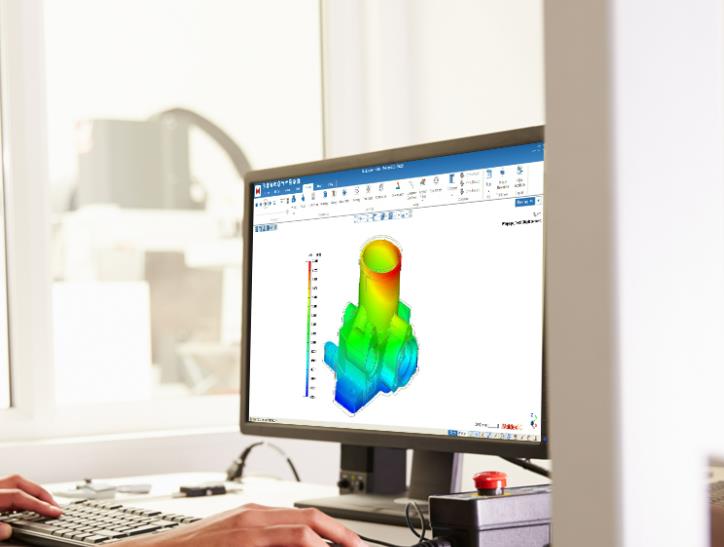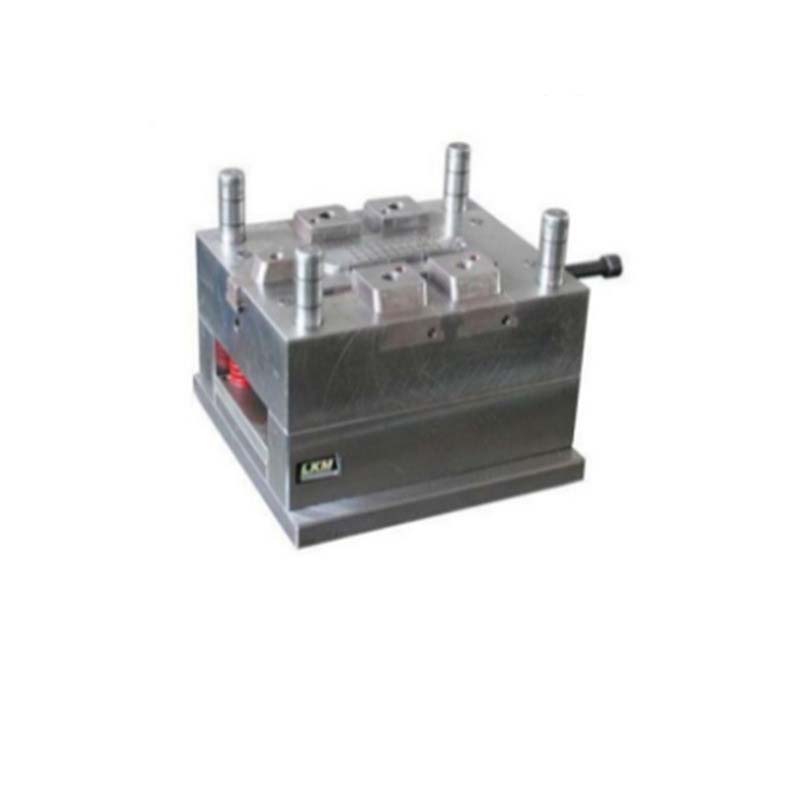Introduction
Understanding Injection Molding Cost: A Comprehensive Guide
Importance of Understanding Injection Molding Cost
In the world of manufacturing, injection molding has emerged as a cornerstone process for producing a vast array of plastic products. From the tiniest components in electronic devices to large automotive parts, injection molding offers precision, efficiency, and the ability to create complex shapes in high volumes. However, one cannot overlook the critical aspect of injection molding cost. Yigu Technology Understanding these costs is of utmost importance for businesses for several reasons.
Budget Control: For any manufacturing project, setting a realistic budget is the first step towards its success. Injection molding costs can vary significantly, and without a proper understanding, a company may face unexpected financial burdens. A miscalculation in cost estimation can lead to budget overruns, which in turn can disrupt the entire production schedule. Yigu Technology For example, if a business plans to launch a new consumer product and underestimates the injection molding cost, it may find itself short on funds during the production phase. This could result in delays, compromises in quality, or even the cancellation of the project. According to a study by a leading manufacturing research firm, nearly 30% of small to medium - sized enterprises that underestimated injection molding costs faced financial difficulties during their product launches.
Pricing Strategy: Determining the right price for a product is a delicate balance. If a company prices its products too high, it risks losing customers to competitors. On the other hand, pricing too low can lead to losses. Understanding injection molding costs allows businesses to set a competitive price that not only covers the production expenses but also provides a reasonable profit margin. For instance, in the highly competitive smartphone accessory market, companies need to be acutely aware of their injection molding costs. If a manufacturer can accurately calculate the cost of producing a phone case through injection molding, it can price the product competitively, attracting more customers and gaining a larger market share.
Competitive Edge: In a global marketplace filled with numerous manufacturers, having a clear understanding of injection molding costs can provide a significant competitive edge. By optimizing costs, a company can offer better - priced products without sacrificing quality. This can attract more customers, both in the domestic and international markets. Yigu Technology For example, some Asian manufacturers have been able to dominate the global injection - molded plastic product market by efficiently managing their injection molding costs. They invest in advanced technologies and streamline their production processes to keep costs low, enabling them to offer products at prices that are hard for their Western counterparts to match.
Resource Allocation: Knowledge of injection molding costs helps in efficient resource allocation. A company can decide where to allocate its resources, whether it's in upgrading equipment, hiring skilled labor, or investing in research and development. For example, if a business knows that a significant portion of its injection molding cost is due to high - energy consumption, it can allocate resources to invest in more energy - efficient equipment. This not only reduces costs in the long run but also makes the company more environmentally friendly.
In Yigu Technology conclusion, understanding injection molding cost is not just about numbers; it's about making informed decisions that can impact the success and sustainability of a business in the highly competitive manufacturing landscape.
Factors Affecting Injection Molding Cost
The cost of injection molding is influenced by a multitude of factors. Understanding these elements is crucial for manufacturers to accurately estimate costs and make informed decisions. These factors can be broadly categorized into mold - related, material - related, and other miscellaneous factors.
Size of the Injection Mold
The size of the injection mold is a fundamental factor in determining cost. Larger molds require more raw materials, whether it's steel, aluminum, or other alloys. For instance, a small - scale mold used for producing a simple plastic toy part might be made from a relatively small block of metal, resulting in a lower material cost. In contrast, a large - scale mold for manufacturing a car bumper will need a significantly larger quantity of metal, driving up the material expenses.
Moreover, the machining time for larger molds is usually longer. Machining processes such as milling, drilling, and grinding take more time to shape a larger mold to the required specifications. A study by a leading manufacturing research institute found that, on average, for every 10% increase in mold size, the machining time can increase by approximately 15 - 20%, leading to higher labor and equipment costs.
Complexity of Injection Mold
The complexity of an injection mold has a profound impact on its cost. Complex molds often involve intricate geometries, undercuts, and multiple moving parts. Consider a mold for a smartphone case with a simple rectangular shape and smooth surfaces. It can be machined relatively easily, requiring fewer machining operations and less precise tooling.
Now, compare this to a mold for a medical device component with complex internal channels, fine details, and tight tolerances. Such a mold demands high - precision machining techniques like Electrical Discharge Machining (EDM) and Computer - Numerical Control (CNC) milling with multiple axes. These advanced machining processes are not only more time - consuming but also require highly skilled operators and expensive equipment. Research shows that molds with high complexity can cost 3 - 5 times more than simple molds of the same size.
Mold Type
There are different types of molds, each with its own cost implications.
- Prototype Injection Molds: These are typically less expensive. They are designed to quickly produce a small number of sample parts for product testing and design validation. Prototype molds are often made from less durable materials like aluminum or even soft plastics in some cases. Yigu Technology For example, a simple prototype mold for a new consumer product might cost between \(3,000 - \)6,000. Since the goal is to test the design concept rather than long - term production, the materials and construction methods are more cost - effective.
- Production Molds: These are built to withstand the rigors of mass production. They are made from high - strength materials, usually steel, to ensure durability over a large number of production cycles. Production molds for medium - scale production runs (e.g., 10,000 - 50,000 parts) can cost between \(10,000 - \)25,000. They are designed with greater precision and quality to maintain consistent part quality throughout the production process.
- Long Production Run Molds: Molds intended for extremely high - volume production, often in the hundreds of thousands or millions of parts, are the most expensive. They are made from premium - grade steel with excellent wear resistance and heat - tolerance properties. These molds can cost upwards of $50,000, depending on their size and complexity. They require meticulous design and construction to ensure they can handle the high - pressure and high - temperature conditions of long - term, high - volume injection molding.
Cavity Type
- Single Cavity Type Mold: A single - cavity mold produces one part per injection cycle. It is suitable for small - scale production or when the part is large and complex, making it difficult to produce multiple parts simultaneously. The cost of a single - cavity mold is generally lower than multi - cavity molds of the same complexity because it requires less material and less complex design. For example, a single - cavity mold for a large industrial component might cost around \(5,000 - \)10,000.
- Family Type Mold (Multi - cavity Mold): Family molds have two or more cavities, which can be identical or produce related parts. For instance, a family mold for producing both the top and bottom halves of a plastic container. Multi - cavity molds are more expensive to design and manufacture initially due to the need to ensure precise alignment and equal flow of the plastic material to each cavity. However, they offer significant cost savings in high - volume production as they can produce multiple parts in a single injection cycle. A multi - cavity mold with four cavities for a small consumer product might cost \(15,000 - \)25,000, but the per - part production cost will be much lower compared to a single - cavity mold when producing large quantities.
Mold Material
The choice of mold material is a significant cost - determining factor. The two most common materials for injection molds are steel and aluminum.
- Steel: Steel molds are known for their high strength, durability, and excellent heat - resistance. They can withstand the high pressures and temperatures generated during the injection molding process for a long time, making them ideal for high - volume production runs. However, steel is more expensive than aluminum. High - quality tool steel used for mold making can cost \(10 - \)30 per pound, depending on the grade. For example, a large steel mold for automotive part production might weigh several hundred pounds, resulting in a substantial material cost. Although the upfront cost of a steel mold is high, its long lifespan and ability to maintain tight tolerances over many production cycles can lead to lower per - part costs in the long term.
- Aluminum: Aluminum molds are lighter and less expensive than steel molds, with aluminum costing around \(2 - \)5 per pound. They also have better heat - dissipation properties, which can reduce the cooling time between injection cycles and increase production efficiency. However, aluminum molds are less durable than steel molds and may wear out more quickly, especially in high - volume production. They are more suitable for small - scale production runs or for prototyping, where the cost - savings in material and shorter production cycles are more important than long - term durability.
Plastic Material
The type of plastic material used in injection molding has a major impact on cost. Thermoplastic resins vary widely in price, ranging from approximately \(2 to \)20 per pound.
- General - Purpose Plastics: Plastics like Polypropylene (PP) and High - Density Polyethylene (HDPE) are relatively inexpensive, often costing around \(2 - \)4 per pound. They are commonly used for products where cost - savings are a priority, such as disposable plastic containers, shopping bags, and basic household items.
- Engineering Plastics: Materials like Polycarbonate (PC), Acrylonitrile Butadiene Styrene (ABS), and Nylon are more expensive, typically ranging from \(6 - \)12 per pound. These plastics offer better mechanical properties, heat - resistance, and chemical resistance, making them suitable for applications in the automotive, electronics, and aerospace industries. For example, PC is often used in the production of smartphone screens and automotive headlamp lenses due to its high transparency and impact - resistance.
- Special - Performance Plastics: Plastics with unique properties such as high - temperature resistance, fire - retardancy, or UV - resistance are the most expensive. For instance, Polytetrafluoroethylene (PTFE), known for its low friction and chemical inertness, can cost upwards of $20 per pound. These plastics are used in specialized applications like aerospace components, medical devices, and high - end electronics.
The specific characteristics of the plastic material also influence cost. For example, a plastic with high - impact resistance may require additional additives or a more complex manufacturing process, increasing its price. Similarly, a high - gloss plastic may need special processing techniques to achieve the desired finish, adding to the overall cost.
Other Factors
Production Quantity
The number of parts to be produced has a direct relationship with the injection molding cost. When the production quantity is low, the cost per part is relatively high because the fixed costs of mold manufacturing and setup are spread over a small number of parts. For example, if a mold costs \(10,000 and only 1,000 parts are produced, the mold cost per part is \)10.
However, as the production quantity increases, the cost per part decreases significantly. If the same mold is used to produce 100,000 parts, the mold cost per part drops to only $0.10. This is known as economies of scale. High - volume production also allows for more efficient use of resources, such as reducing the per - part energy consumption and labor cost associated with machine operation.
Machining Process
The machining process used to create the injection mold affects both cost and quality.
- Conventional Machining: This involves traditional machining methods like milling, turning, and drilling using manual or semi - automated equipment. Conventional machining is relatively slow and may require more labor - intensive operations. It is often more suitable for simple molds or when precision requirements are not extremely high. The cost of conventional machining can be relatively low for small - scale projects, but it may become expensive for complex molds due to the long machining times.
- Computer Numerical Control (CNC) Machining: CNC machining uses pre - programmed computer software to control the movement of machine tools. It offers high precision, repeatability, and the ability to produce complex shapes with greater accuracy. CNC machines can work continuously, reducing production time compared to conventional machining. Although the initial investment in CNC equipment is high, it can lead to cost savings in the long run for high - volume production of complex molds. For example, a CNC - machined mold for a high - precision medical device component can be produced with tight tolerances in a shorter time compared to conventional machining, resulting in higher - quality parts and potentially lower overall production costs.
- Electrical Discharge Machining (EDM): EDM is a specialized machining process that uses electrical discharges to erode material from the workpiece. It is particularly useful for creating intricate shapes, sharp corners, and fine details in molds that are difficult to achieve with other machining methods. EDM is a slow process and requires specialized equipment and skilled operators, making it relatively expensive. However, for molds with high - complexity features, EDM may be the only viable option to meet the design requirements.
Calculating Injection Molding Cost
General Formula
Calculating injection molding cost involves a comprehensive consideration of multiple elements. The general formula for calculating the cost per part in injection molding can be expressed as:\(Cost\ per\ part = \frac{Mold\ cost + (Material\ cost\ per\ part\times Production\ quantity)+Processing\ cost + Other\ costs}{Production\ quantity}\)
Mold Cost: As previously discussed, the mold cost is determined by factors such as the size, complexity, type, and cavity configuration of the mold. For example, a simple single - cavity prototype mold might cost \(3,000, while a large, complex multi - cavity production mold could cost \)50,000 or more.
Material Cost per Part: This is calculated by multiplying the weight of the plastic material used per part by the price per unit weight of the plastic. For instance, if a part weighs 50 grams and the plastic material costs \(5 per kilogram (or \)0.005 per gram), the material cost per part is \(0.25 (50 grams × \)0.005 per gram).
Processing Cost: The processing cost includes expenses related to machine operation, labor, and energy consumption during the injection molding process. It can be calculated based on the machine's hourly rate and the cycle time per part. For example, if an injection molding machine has an hourly rate of \(60 and the cycle time per part is 30 seconds (or 0.5 minutes), and the machine can produce 120 parts per hour (60 minutes ÷ 0.5 minutes per part), the processing cost per part is \)0.50 ($60 per hour ÷ 120 parts per hour).
Other Costs: Other costs may include packaging, transportation, quality control, and any additional finishing operations such as painting, plating, or assembly. For example, if the packaging cost per part is \(0.10 and the transportation cost per part is \)0.05, these additional costs need to be factored into the overall calculation.
Example Calculation
Let's consider a more detailed example to illustrate how these factors come together to calculate the injection molding cost. Suppose a company wants to produce 100,000 plastic smartphone cases.
Mold Cost: A medium - complexity multi - cavity mold for smartphone cases is required. The mold is made of steel and has four cavities. The cost of the mold is $20,000.
Material Cost per Part: The smartphone cases are made of ABS plastic, which costs \(8 per kilogram. Each case weighs 80 grams. So the material cost per part is \)0.64 (80 grams × ($8 per kilogram ÷ 1000 grams per kilogram)).
Processing Cost: The injection molding machine used has an hourly rate of \(80. The cycle time for each part is 40 seconds (or 0.67 minutes). The machine can produce 90 parts per hour (60 minutes ÷ 0.67 minutes per part). So the processing cost per part is approximately \)0.89 ($80 per hour ÷ 90 parts per hour).
Other Costs: The packaging cost per part is $0.15, and there are no additional finishing operations or significant transportation costs for this example.
Now, let's calculate the cost per part using the formula:\(Cost\ per\ part=\frac{20000+(0.64\times100000)+(0.89\times100000)+(0.15\times100000)}{100000}\)
\(Cost\ per\ part=\frac{20000 + 64000+89000 + 15000}{100000}\)
\(Cost\ per\ part=\frac{188000}{100000}=1.88\)
So, the cost per smartphone case for this production run is $1.88. This example clearly shows how each factor contributes to the overall injection molding cost and how important it is to accurately estimate these costs when planning a production project.
Comparing Injection Molding Prices
How to Obtain Quotes
When looking to compare injection molding prices, the first step is to obtain quotes from multiple sources. Here are some effective ways to do this:
- Online Platforms: There are numerous online platforms dedicated to connecting manufacturers with injection molding service providers. These platforms often have a directory of companies, along with customer reviews and ratings. Some popular platforms allow you to upload your CAD (Computer - Aided Design) models and project specifications, and then receive instant or near - instant quotes from various suppliers. For example, Xometry is an online marketplace that offers quotes for injection molding, CNC machining, and other manufacturing services. By simply uploading your design files and specifying details such as part quantity, material, and finish, you can receive multiple quotes from different suppliers within a short period.
- Direct Contact: Reaching out directly to injection molding companies is also a reliable method. You can find a list of potential companies through industry directories, trade shows, or referrals. Once you have a list, send them a detailed email or give them a call. Provide them with all the necessary information about your project, including the dimensions of the part, the complexity of the design, the expected production quantity, and the desired plastic material. For instance, if you are looking to produce 50,000 plastic brackets for a furniture project, describe the shape, size, and any special features of the brackets, and ask for a quote based on your preferred plastic material, such as ABS or polypropylene.
- Request for Proposals (RFPs): For larger projects or when you need a more comprehensive solution, issuing an RFP can be beneficial. An RFP is a formal document that outlines your project requirements, including technical specifications, quality standards, delivery schedules, and budget constraints. You send this document to a selected group of injection molding companies, inviting them to submit a detailed proposal. This allows you to compare not only the prices but also the capabilities, experience, and proposed solutions of different suppliers. For example, a large automotive company looking to outsource the production of a new plastic component for their vehicles might issue an RFP to multiple injection molding suppliers. The RFP would include details about the component's design, the required production volume (say, 100,000 units per month), the quality certifications needed, and the expected delivery time frame.
What to Consider When Comparing Quotes
When comparing injection molding quotes, several critical factors need to be taken into account:
- Mold Material: As previously discussed, the choice of mold material can significantly impact the cost. Steel molds are more durable and suitable for high - volume production but are more expensive upfront. Aluminum molds are less costly initially and offer better heat - dissipation, making them suitable for small - scale production or prototyping. When comparing quotes, ensure that the mold material proposed by each supplier aligns with your production needs. For example, if you plan to produce 500,000 plastic parts over a year, a steel mold would be a more cost - effective choice in the long run, despite its higher initial cost. A comparison of the cost of steel and aluminum molds for different production volumes can be seen in the following Yigu Technology table:
| Production Volume | Steel Mold Cost (Estimated) | Aluminum Mold Cost (Estimated) | Long - term Cost - effectiveness |
| --- | --- | --- | --- |
| 10,000 parts | \(15,000 | \)8,000 | Aluminum may seem cheaper initially, but steel may be more cost - effective considering durability |
| 100,000 parts | \(20,000 | \)12,000 | Steel becomes more cost - effective as it can withstand more production cycles without significant wear |
| 500,000 parts | \(30,000 | \)20,000 | Steel is clearly more cost - effective over a large number of production cycles |
- Machining Process: The machining process used to create the injection mold affects both cost and quality. CNC machining offers high precision and repeatability, while EDM is better for creating intricate shapes. Conventional machining may be the least expensive but may not be suitable for complex molds. When comparing quotes, ask about the machining process each supplier uses. A supplier using CNC machining may be able to offer faster production times and better quality for complex molds compared to a supplier relying solely on conventional machining. For example, for a mold with complex internal geometries for a medical device, EDM may be the preferred machining process, but it will likely come at a higher cost compared to a simpler mold that can be machined using CNC.
- Plastic Material: The type of plastic material is a major cost factor. Different plastics have different properties and price ranges. General - purpose plastics like PP and HDPE are relatively inexpensive, while engineering plastics such as PC and ABS are more costly. Special - performance plastics are the most expensive. When comparing quotes, make sure the suppliers are quoting based on the same or equivalent plastic materials. If one supplier quotes using a lower - grade plastic to offer a lower price, it may not meet your product's performance requirements. For example, if you need a plastic part for an outdoor application that requires UV resistance, using a standard plastic without UV - resistant properties, even if it's cheaper, will result in a product that degrades quickly under sunlight.
- Services and Post - processing: Some quotes may include additional services such as mold design, prototyping, quality control, and post - processing operations like painting, plating, or assembly. Others may only cover the basic injection molding process. When comparing quotes, clarify what services are included. A quote that includes comprehensive services may seem more expensive initially but could save you time and money in the long run. For example, if you need a plastic part with a painted finish, a quote that includes painting in the price will eliminate the need to find a separate painting service, reducing coordination efforts and potential costs.
- Injection Molding Type: Different types of injection molding, such as simple, complex, family molds, overmolding, or insert molding, have different cost implications. Make sure the suppliers are offering the type of injection molding that suits your product design. For example, if your product requires overmolding to combine two different materials for enhanced functionality, a supplier that doesn't offer overmolding capabilities or quotes a high price for it may not be the best choice.
Conclusion
Yigu Technology Injection molding cost is a multifaceted aspect of the manufacturing process that demands careful consideration. By understanding the various factors that contribute to the cost, such as mold - related elements (size, complexity, type, and cavity configuration), material - related factors (mold material and plastic material), and other aspects like production quantity and machining process, manufacturers can make informed decisions.
Calculating injection molding cost accurately using the general formula and considering real - world examples helps in setting realistic budgets and pricing strategies. Comparing injection molding prices from different sources and taking into account factors like mold material, machining process, plastic material, services, and injection molding type ensures that businesses can find the most cost - effective solutions.
In a highly competitive manufacturing landscape, controlling injection molding costs is crucial for maintaining profitability and gaining a competitive edge. By optimizing costs, businesses can allocate resources more efficiently, offer competitive prices, and ultimately achieve long - term success in the market. Whether it's through choosing the right mold material, streamlining the production process, or negotiating favorable terms with suppliers, every effort to manage injection molding costs can have a significant impact on the bottom line. As the manufacturing industry continues to evolve, staying informed about the latest trends and technologies in injection molding cost management will be essential for businesses to thrive.
